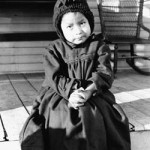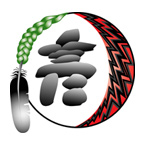Quite frankly, there is no real reason for me to include this weblog. However, I figured it’s a good example of why we should not take Google searches and wikis as fact. As you can see, although the answer is certainly true, there are some “small” or “minor” things (such as colonization) left out of the answer. I would not want my students using this for projects, or for increasing their knowledge.
Day: November 7, 2009
http://www.fncfcs.com/projects/FNRS.html
First Nations Research Site
The reason that I chose this site is because it is an excellent resource for those who work with First Nations children or in social work. The goals of the DNRS are as following:
- To assist the Centre of Excellence for Child Welfare in analyzing and reporting on Canadian child welfare data, specifically data within the First Nations child welfare context;
- To share innovations and issues in practice, policy, knowledge research, skill development, and administration in First Nations child welfare;
- To stimulate discussion among local, regional, provincial and national child welfare agencies on current research, policies and/or practices that affect or benefit First Nations children, youth, families and/or communities;
- To promote networking and the exchange of ideas among First Nations practitioners, academic researchers, policy makers, and advocates who work in the First Nations child and family services field;
- To assist in building and strengthening research capacity among First Nations individuals, agencies, and organizations engaged in child welfare research, policy and/or practice;
- To build a pool of resources and networks from, within and among academic and private First Nations researchers;
- To promote the training of professional staff, researchers, caregivers, and volunteers;
- To promote the development of techniques for evaluating the programs and services delivered to First Nations children, families and communities by the First Nations child welfare agencies and organizations in Canada (Bennett & Blackstock, 2006, p.283-284).
This site is a fantastic site to help those who do research for the government or even for independent researchers. It provides guidelines and suggestions on researching First Nations in Canada and offers a fantastic mandate. I highly recommend reading the current projects for examples of what this program does.
Memory Place
Memory Place is a project that proposes to house IK digitally for Indigenous communities and researchers. They have started a database for Groote Elandt but the database software is open source and is freely available from Sourceforge for use in other communities. The software is for storing and accessing all types of Indigenous media. It was developed (and funded) by the Anindilyakwz Lando Council as a way to pass on to Aboriginal youth the cultural and linguistic knowledge. It is designed to offer a safe deposit for IK allowing it be accessed in a culturally sensitive way. The project involved the community at every step and took into account Indigenous Knowledge systems and Indigenous Computing in the design.
Web site: http://memoryplace.sourceforge.net/index.html
A version of the software is available at http://sourceforge.net/project/platformdownload.php?group_id=161316&sel_platform=1607
I have downloaded the software but am having some technical issues with the installation. However, I am hopeful to resolve them soon as I have been in contact with the designers. The project is very professional and I think it could be an excellent option for use in Oaxaca.
Indigenous Knowledge and Resource Management in Northern Australia
Making Collective Memory with Computers
Web Site: http://www.cdu.edu.au/centres/ik/ikhome.html
The IKRMNA was a project that ran from 2003 to 2006 and aimed to support and develop databases that focused on the preservation of Indigenous languages and culture in Northern Australia. It was coordinated by the School of Australian Indigenous Knowledge Systems at Charles Darwin University and received funds from the Australian Research Council. The project developed solutions for institutions, Indigenous communities, published papers and developed software. Among other activities, the project developed a prototype digital systems that allows Indigenous communities to develop a collective memory. TAMI (Text, Audio, Movies and Images) is a database and file management system for IK developed specifically to take into consideration the needs of Australian Aboriginal communities. Interestingly they propose the use of Maps and navigation interfaces since IK is place based.
Links from this site:
There is a link to an animation of TAMI
http://www.cdu.edu.au/centres/ik/db_TAMI.html#
There are many interesting papers such as:
Digital Technologies and Aboriginal Knowledge Practices http://www.cdu.edu.au/centres/ik/pdf/DigTech_IndigPlaceAust.pdf
& Software for Educating Aboriginal Children about Place
http://www.cdu.edu.au/centres/ik/pdf/HRV_for_Kritt_WinegarFINAL4-06.pdf
There are several links to other sites.
Of interest is the link to the Aboriginal Mapping Network that helps Indigenous communities to protect and develop land based resources by using mapping tools. http://www.nativemaps.org/
The Indigenous Knowledge Project
This project is run by the Information Technology & Electrical Engineering of The University of Queensland Australia. The site is not current having been last updated in July, 2008 and the most recent publications are from 2006. However, it is an interesting site on IK management software. The stated objective of the site is to see how IT can be used to allow Indigenous communities to conserve their IK and culture in a sensitive way. The project aims to work with the custodians of IK to develop suitable software that preserves IK while respecting Indigenous protocols with respect to access. It also emphasizes the importance of maintaining ownership and control of IK within the community.
Web site: http://www.itee.uq.edu.au/~eresearch/projects/ikm/index.html
Web Site Links
The site offers some interesting papers such as “Software Tools for Indigenous Knowledge Management” http://www.itee.uq.edu.au/~eresearch/papers/2003/IKM_software.pdf but of most interest is the software that the project has developed for IK management.
There is the XML Metadata Editor/Generator Application (XMEG), which allows the user to record metadata onto an IK media file, not only to describe the content, but also to restrict access.
My particular interest is the demo they have created of an Indigenous Knowledge Web site: Indigenous Knowledge Web Demo http://maenad.itee.uq.edu.au/kweb/
watch this video on Sunlife
Sunchild E-Learning Community delivers courses and student services that are flexible and sensitive to the unique needs of First Nations learners using e-learning tools such as Skype and Wimba.
Based in Alberta, the community is for adult learners and high school students to further their education without the challenges of geographical location, daycare issues,work and class size. Often classes are canceled due to the lack of numbers but since Sunchild is online students in remote communities can attend a class that their remote school cannot support.
They have courses for adult literacy as well. Watch this video
I am starting to rethink my paper thesis. I think I want to change it to how blogs can fit into learning theories of Aboriginals. I was going to examine how blogs work with constructing social knowledge for the aboriginal tribes but I am starting to see how native learning theory and constructivism is very similar and blogs can play a role in constructing social knowledge.
The Journal of American Indian Education mission is:
to improve Native Education through knowledge generation and transmission to classrooms and other educational settings.
On this site I found this article LEARNING STYLES OF AMERICAN INDIAN/ALASKA NATIVE STUDENTS: A REVIEW OF THE LITERATURE AND IMPLICATIONS FOR PRACTICE
Shared Stories is a collection of stories about survivors of the residential schools. Using technology, survivors are able to share and archive their stories. As the number of survivors diminishes, it is important to see and hear their painful stories in order to share a deeper understanding of the trauma that was inflicted on these people, helping to create empathy for them and reconciliation for them.
This site is part of a larger site called Where are the Children? Healing the legacy of residential schools. The site features a virtual journey through the experiences of survivors of the residential schools operated in Canada. It is hope that It is their hope that the website will provide healing and restoration to healthy First Nations communities. The site encourages children to ask their parents and grandparents questions about their families histories. This site is sponsored by The Legacy of Hope Foundation, Aboriginal Health Foundation, and the Library and Archives Canada.

A young student at the Old Anglican Mission School on the Blackfoot Reserve, Alberta, ca. 1900.
Photographer: Glenbow Archives, NC-5-53, Retrieved Nov. 7 from Where are the Children website. http://www.wherearethechildren.ca/en/assimilation.html
Virtual Tour of Aboriginal Canada
This site has a visual map search of indigenous populations across Canada. I read the news and hear about various bands but I can’t geographically ‘place’ them. With this site, the maps not only geographically place tribes but with click will open a new window containing specific tribal websites. Not all the links are work but most do.
I can now understand where all the aboriginal communities are in Ontario.
To me this looks like a well-maintained site, with a great deal of sources and it is visually appealing.
 The Aboriginal Healing Foundation (AHF) is an Aboriginal managed, non-profit, national corporation based in Ottawa. Funded by a one time government grant of $350 million dollars, their mandate was to encourage and support community based Aboriginal healing initiatives to deal with the legacy of physical and sexual abuse suffered in Canada’s Indian Residential School System and the multigenerational impacts. This organization is necessary due to the institutional abuses suffered which has resulted in lateral violence, suicide, depression, poverty, alcoholism, lack of parenting skills, and difficulty maintaining healthy relationships. They hope that in the future these effects will have been meaningfully resolved and that Aboriginal people can return to healthy lifestyles for themselves and their future generations.
The Aboriginal Healing Foundation (AHF) is an Aboriginal managed, non-profit, national corporation based in Ottawa. Funded by a one time government grant of $350 million dollars, their mandate was to encourage and support community based Aboriginal healing initiatives to deal with the legacy of physical and sexual abuse suffered in Canada’s Indian Residential School System and the multigenerational impacts. This organization is necessary due to the institutional abuses suffered which has resulted in lateral violence, suicide, depression, poverty, alcoholism, lack of parenting skills, and difficulty maintaining healthy relationships. They hope that in the future these effects will have been meaningfully resolved and that Aboriginal people can return to healthy lifestyles for themselves and their future generations.
Links available include:
Congress of Aboriginal Peoples
Truth and Reconciliation Commission
Indian Residential Schools Resolution Canada
AHF logo [Online Image]. (n.d.). Retrieved November 17, 2009, from AHF website. http://www.ahf.ca/announcements